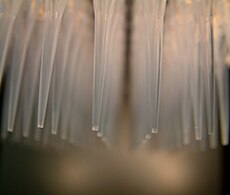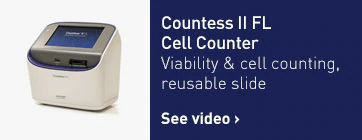Fluorescence Microplate Assays
- Fluorescence Microplate Assays
- Microplate Assays for Caspase Activity
- Microplate Assays for Cell Proliferation
- Microplate Assays for Cell Signaling and Lipids
- Microplate Assays for Cell Viability
- Microplate Assays for Enzyme Activity
- Microplate Assays for β-Galactosidase Activity
- Microplate Assays Using Ion Indicators
- Microplate Assays Using Metabolites and Analytes
- Microplate Assays for Nucleic Acids
- Microplate Assays for Protein Quantitation
- Microplate Assays for Reactive Oxygen Species
- Antibodies
- Flow Cytometry
- Cellular Imaging
- Imaging Cell Structure
- Labeling Chemistry
- Fluorophore selection
- Immunoassays
- Neurobiology
- Cell Function Assays
- Quantum Dots & Microspheres
- Cell Isolation & Expansion
- Cell Tracing, Tracking, and Morphology
- Cell Signaling Pathways
- Single Cell Analysis
- Microbiological Analysis
- Exosome Products for Research
- Cell Analysis Learning Center
- Cell Analysis Instruments

Combining the sensitivity of a fluorescence-based assay with a microplate format enables a rapid, quantitative readout suitable for high-throughput analysis. In a microplate well, the fluorescent signal can be generated within whole cells, in cell lysates, or in purified enzyme preparations and may then be analyzed by measuring fluorescence intensity from the well without the need for cellular imaging.
Many of these assays include substrates, buffers, and calibration standards as well as kinetic or endpoint protocols.
Explore our portfolio of easy-to-learn, easy-to-use microplate readersFluorescence microplate applications
Caspase Assays
- Live-cell assays
- Caspase-3/7 assays
- Other caspase substrates
Cell Proliferation
- DNA content
- DNA synthesis
Cell Signaling and Lipids
- Cholesterol
- Phosphate and pyrophosphatase
- Phosphatase
- Phospholipase
Cell Viability
- Mammalian cell assays (measuring reduction potential and membrane integrity)
- Bacteria and yeast assays
Enzyme Activity
- Phosphatases
- Phospholipases
- Proteases
- Other enzymes
β-Galactosidase Assays
- Assay kits
- β-gal substrates
- Glucosidase substrates
Ion Indicators
- Intracellular calcium
- Intracellular magnesium
- pH indicators
Metabolites and Analytes
- Metabolic assays
- Neurobiology assays
- Inflammation assays
Nucleic Acids
- dsDNA assays
- ssDNA assays
- RNA assays
Protein Quantitation
- CBQCA
- Quant-iT™ assay
- NanoOrange® assay
Reactive Oxygen Species
- Oxidative stress
- Nitric oxide
- Other oxidative indicators
Viability Confirmation
- Multiplexed viability/cytotoxicity assay
- Automation-friendly

Expertly detect fluorescence with Thermo Scientific plate readers
High-sensitivity fluorescence detection for 96-1,536 samples can be quickly performed on Fluoroskan or Fluoroskan FL Microplate Fluorometer or Varioskan LUX Multimode Microplate Reader using Invitrogen reagents for optimal detection. Take advantage of automatic dynamic range selection to get optimal gain settings for each individual well and automation capabilities for even higher throughput.
Compare readers
